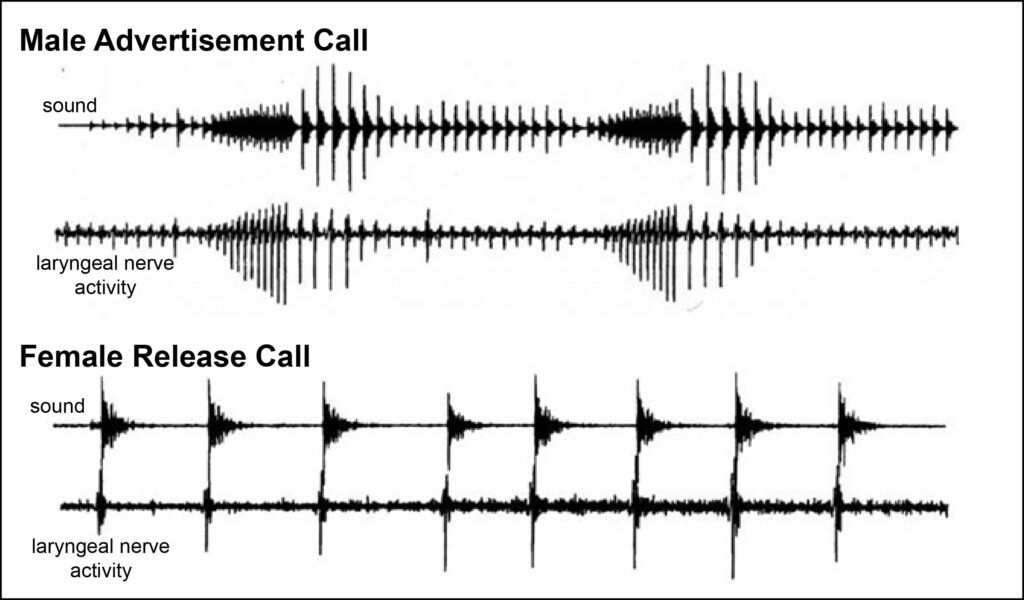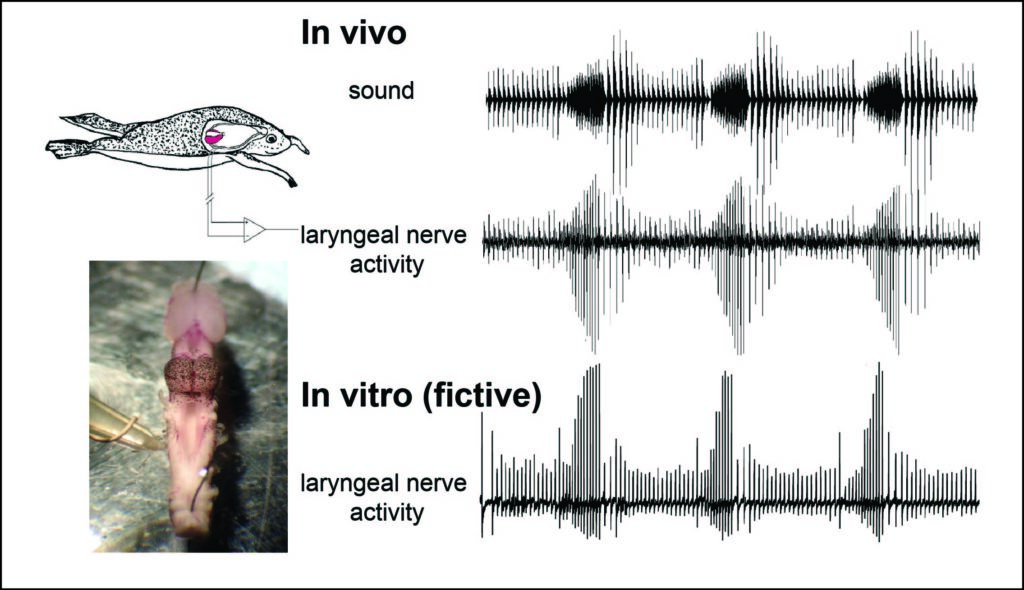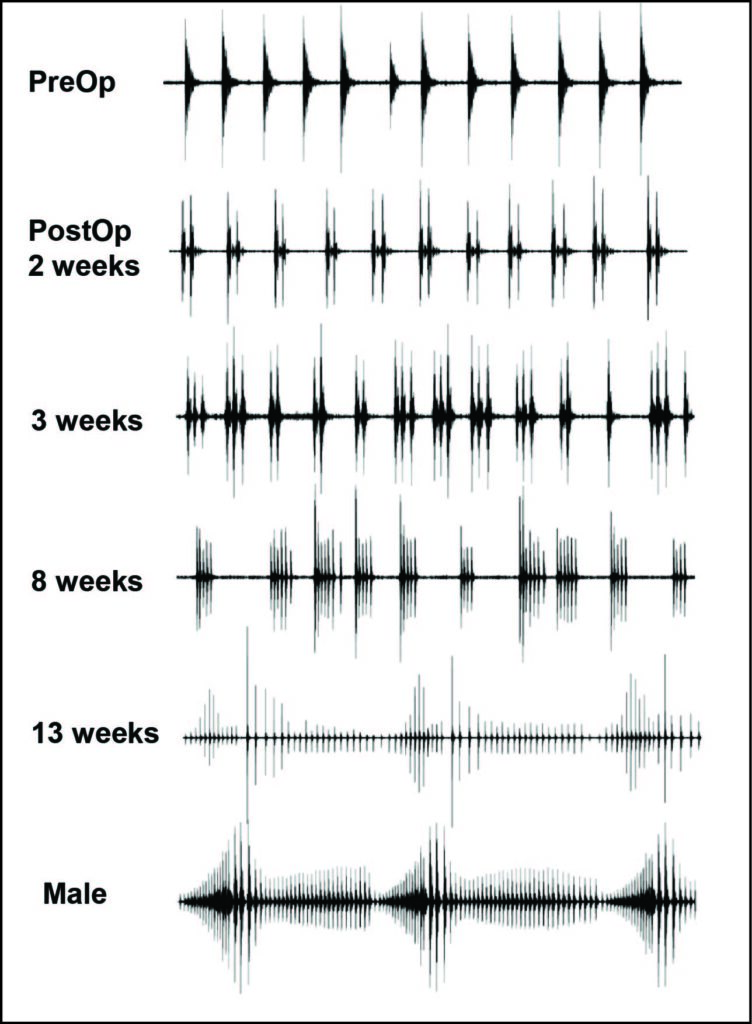Male and female frogs generate sexually distinct vocalizations. When sexually mature female is implanted with testosterone, however, their vocalizations become masculinized within 5 to 13 weeks, indicating that the androgen can reorganize the central vocal pathways. We hypothesize that the androgen-induced neural plasticity is mediated by the perineuronal nets (PNNs), an extracellular matrix that is known to be inversely correlated with neural plasticity. We are currently quantifying androgen-induced change in the PNNs in the brainstem, and determining if vocal masculinization can be blocked if PNNs are prevented from degrading.
The most salient product of brain activity is behavior. Understanding the neural mechanisms underlying behavior presents a formidable challenge requiring a well- chosen model system and sophisticated experimental tools. In my lab, we study neural basis of vocalizations of the African clawed frog, Xenopus laevis, and their closely related relatives. Xenopus vocal pathways is a model system exceptionally well suited for neural analyses of behavior. In these species, a simplified mechanism of vocal production (independent of respiratory musculature) allows straightforward interpretations of neuronal activity with respect to behavior (Fig 1). Moreover, neural mechanisms of calling can be studied in vitro because fictive vocalizations can be elicited in the isolated brain (Fig 2). Furthermore, the vocalizations of Xenopus are sexually differentiated and can be rapidly masculinized/demasculinized in an androgen- dependent manner (Fig 3). Such plasticity provides us with a unique opportunity for exploring how new behavior arises from existing neural circuits in response to steroid hormones. In my lab, we use variety of experimental techniques including electrophysiology, immunohistochemistry, pharmacology, behavior, and more recently, optogenetics to understand how neural circuits generate rhythmic motor programs underlying vocal behavior in Xenopus. Current research projects include biophysical characterization of premotor neurons, optogenetic analyses of the central vocal pathways, neurochemical identification of the vocal neurons, and comparative analyses of the neural circuitry across different species of Xenopus.


Figure 3. Masculinization of female vocalizations. In response to androgen, adult females masculinize their vocalizations from female-typical release call to male-like advertisement call within 13 weeks. Masculinized vocalizations of females are similar to those of adult males. Potter, Bose, and Yamaguchi, 2005 J Neurophys.
Figure 1. Simultaneous sound and nerve recordings obtained from male and female Xenopus laevis. Male and female vocalizations of Xenopus laevis (the top and the third from the top traces) are made of series of clicks repeated at sex-specific rates. Each click sound is preceded by compound action potential in the laryngeal nerve (traces from the second and the fourth from the top). Yamaguchi and Kelley, J Neurosci. 2000.
Male Advertisement Call
Female Release Call
Figure 2. “Singing brain in a dish” preparation. In vivo, male advertisement call (top trace) are generated by a series of compound action potentials generated by the laryngeal motoneurons (middle trace, the electrical signal is converted into sound in the audio file). In vitro, a male brain isolated in the dish (bottom left) generates fictive vocalizations (bottom right trace) in response to serotonin (here, electrical nerve recordings were converted into sound to demonstrate the similarity of the nerve activity and the call). Rhodes, Yu, and Yamaguchi, J Neurosci. 2007.

